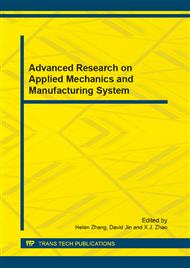p.255
p.259
p.263
p.267
p.271
p.276
p.280
p.285
p.289
Study on Corrosion Behavior of the 304 Stainless Steel in the Heavy Oil with High Salt, High Sulfur and High Acid Value
Abstract:
The uniform corrosion and localized corrosion of 304 stainless steel in heavy oil with high salt, high sulfur and high acid value were researched by weight loss method and electrochemical method. The corrosion morphology of samples with and without corrosion product films and the compositions of the corrosion product films were observed using SEM and EDS. The results show that the 304 stainless steel is inapplicable to the refinery equipment of this heavy oil because of the severe local corrosion even if the uniform corrosion rate is as low as 0.0107mm/a. The salt corrosion and sulfur corrosion occur on the local surface of 304 stainless steel because of the chloride ion formed by hydrolysis of salt in the small emulsifying water. The water soluble iron naphthenate produced by chemical reaction between naphthenic and ferrous sulfides impel the local corrosion of the 304 stainless steel.
Info:
Periodical:
Pages:
271-275
Citation:
Online since:
December 2012
Authors:
Keywords:
Price:
Сopyright:
© 2013 Trans Tech Publications Ltd. All Rights Reserved
Share:
Citation:


